Gotham City. The name conjures images of towering skyscrapers piercing perpetually cloudy skies, rain-slicked streets echoing with sirens, and the looming gargoyles that watch over a city teetering on the brink. But for those unfamiliar with the shadowy world of Batman, a fundamental question arises: Where Is The City Of Gotham actually located? Is it a real place, or purely a product of fiction?
While Gotham City isn’t found on any real-world map, its origins and inspirations are deeply rooted in reality, evolving over decades within the pages of DC Comics. Let’s delve into the fascinating history of Gotham, from its literary namesake to its complex, often contradictory, fictional backstories.
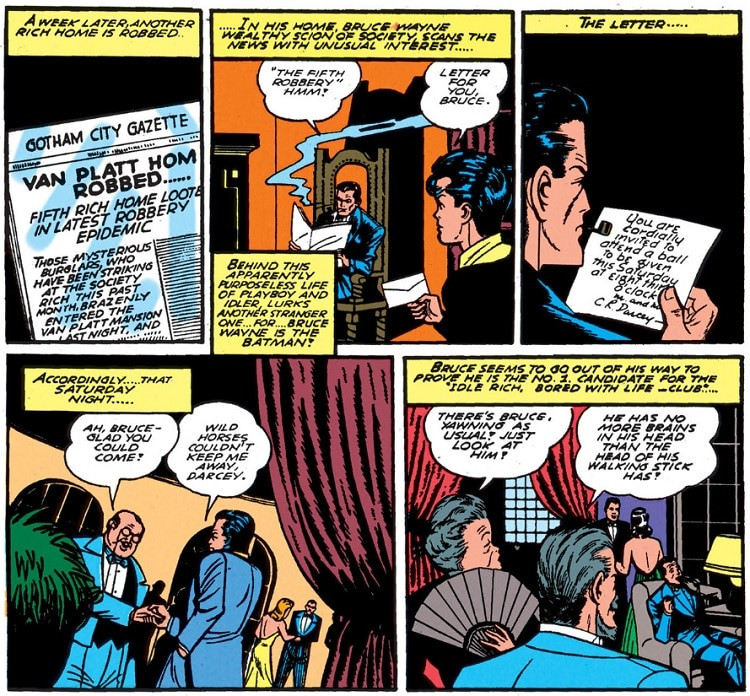 An image from Detective Comics showcasing an early mention of Gotham City, illustrating the historical context of Batman’s urban landscape.
An image from Detective Comics showcasing an early mention of Gotham City, illustrating the historical context of Batman’s urban landscape.
From English Folklore to American Metropolis: The Name “Gotham”
Before Gotham became synonymous with Batman’s crime-ridden stomping ground, “Gotham” was a name with a history of its own. Its roots stretch back to 15th-century English folklore and the “Wise Men of Gotham.” This village, Gotham, literally meaning “goat home” in Old English, was the setting for tales of supposed fools who feigned madness to deter a costly royal visit from the King. By acting foolish, they were, in fact, quite wise.
In the early 19th century, American author Washington Irving, famous for “The Legend of Sleepy Hollow,” repurposed “Gotham” as a nickname for New York City. Irving used the moniker to satirize New York’s perceived pretensions and deceptive brilliance, drawing a parallel to the cunning fools of English folklore. Over time, “Gotham” transformed into a general nickname for any large, bustling metropolis, much like “Metropolis” itself.
When Batman’s creators, Bob Kane and Bill Finger, needed a name for the Caped Crusader’s city, “Gotham City” emerged as the perfect choice. It evoked a sense of urban anonymity, suggesting a city that could be anywhere and everywhere in America, yet with a subtly darker, more mysterious undertone than simply calling it “New York City.” Interestingly, while Batman #4 in 1941 is recognized for first naming Batman’s city as Gotham in DC Comics, the name predates even that within comic books. Fawcett Comics’ Wow Comics #1 in 1940, home to Mister Scarlet, also used “Gotham City,” highlighting the name’s broader cultural resonance at the time.
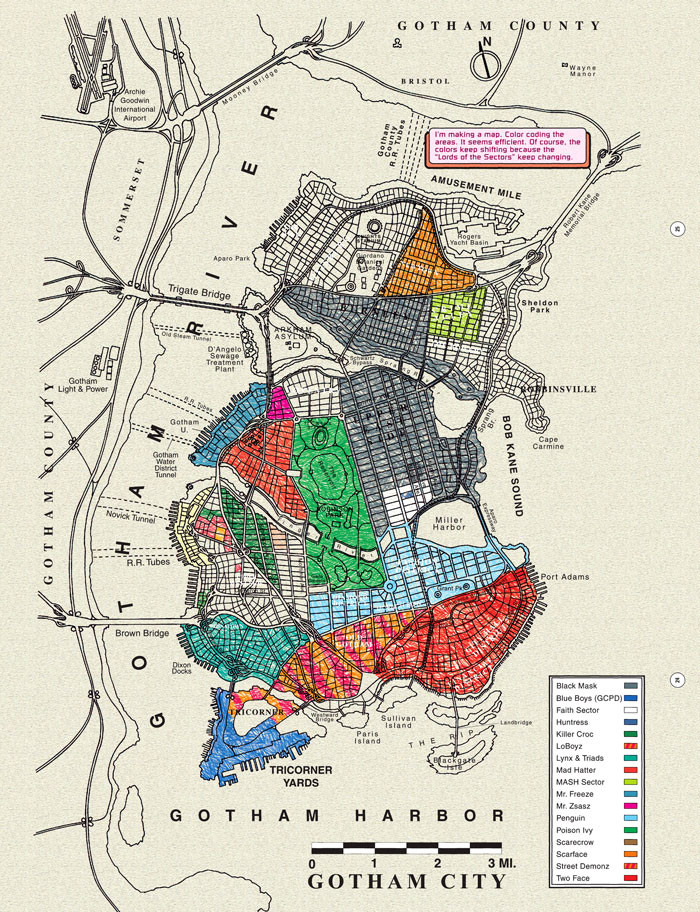 A comic panel depicting the shadowy atmosphere often associated with Gotham City, emphasizing its visual representation in Batman comics.
A comic panel depicting the shadowy atmosphere often associated with Gotham City, emphasizing its visual representation in Batman comics.
Gotham’s Fictional Foundations: Myths and Settlers
While the name “Gotham” has clear real-world origins, the city of Gotham within the DC Universe boasts its own fictional history, layered with intriguing, and sometimes conflicting, accounts.
Long before European settlers arrived, the island upon which Gotham stands was home to the Miagani tribe, as first mentioned in Batman: The Cult. Batman: The Return of Bruce Wayne further explored their history, revealing a fascinating, time-bending connection: the Miagani’s reverence for the bat symbol stemmed from Batman himself, who, through time travel, aided them against Vandal Savage. The Miagani persisted until the 19th century, around the time of Jonah Hex, before vanishing, though the sinister Deacon Blackfire later claimed to speak for their lost legacy.
Another, more mystical, origin story surfaces in the Shadowpact series. This account attributes Gotham’s inherent strangeness to the island’s role as the tomb of an ancient, malevolent warlock known as “Doctor Gotham.” His lingering dark spirit is said to have warped the very foundations of the city, driving it towards madness. While the canonicity of Doctor Gotham’s influence is debatable, it adds a layer of supernatural unease to the city’s character.
More conventionally, Gotham’s recorded history points to Dutch settlers in 1609 as the founders of the city as we know it. They initially christened it “New Rotterdam,” mirroring New York’s original name, “New Amsterdam,” solidifying the intended parallel between the fictional and real-world metropolises.
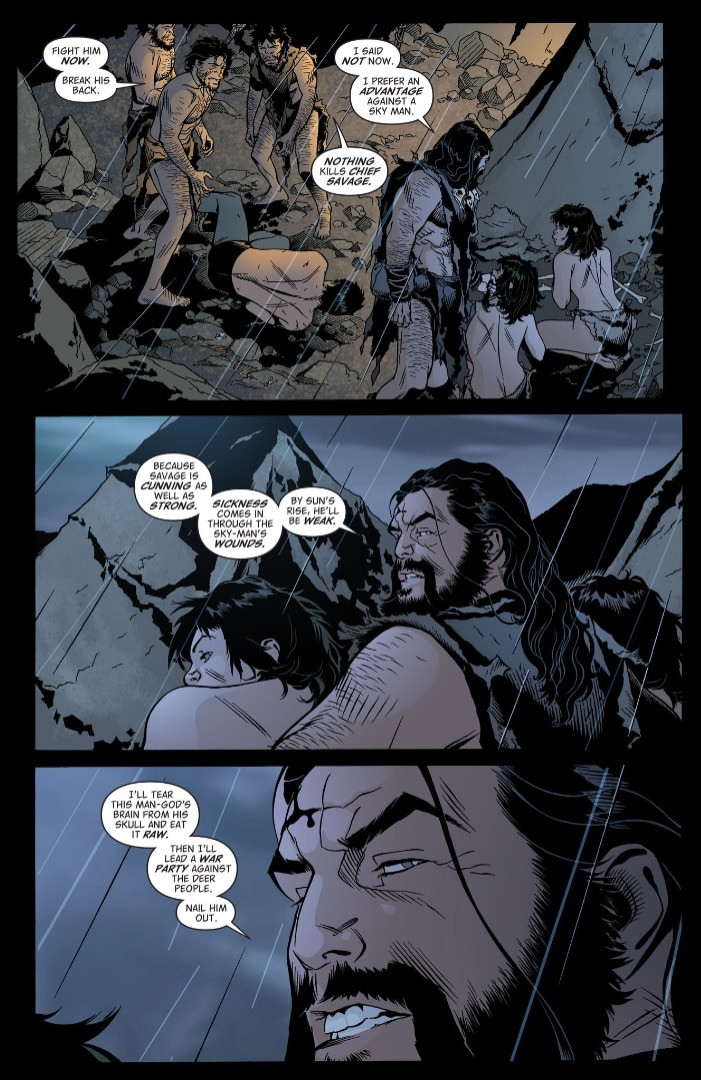 An artistic representation of Gotham’s early history, possibly depicting the Miagani people or the city’s nascent stages of development.
An artistic representation of Gotham’s early history, possibly depicting the Miagani people or the city’s nascent stages of development.
The Rise and Fall: From Wonder City to Crime Capital
The 19th century marked Gotham’s dramatic transformation into the sprawling urban center familiar to Batman fans. Driven by influential “old money” families – the Waynes, Kanes, Elliots, and Cobblepots – Gotham underwent a period of rapid architectural development. Visionary architects like Cyrus Pinkney and the Gate brothers, Bradley and Nicholas, shaped Gotham’s distinctive skyline, as chronicled in Batman: Gates of Gotham.
However, beneath the veneer of progress, a clandestine organization known as the Court of Owls quietly exerted control. Comprised of Gotham’s elite, this secret society manipulated the city’s affairs for centuries, viewing Gotham as their personal playground, until Batman exposed their existence in more recent times.
According to Batman: Streets of Gotham, the 19th century represented Gotham’s zenith, earning it the moniker “The Wonder City.” A thriving industrial hub with booming manufacturing, coupled with a vibrant entertainment sector boasting amusement parks, zoos, and museums, made Gotham a prosperous and family-friendly city. Yet, as industries shifted and factories closed, economic decline set in. This vacuum was tragically filled by organized crime. The abandoned infrastructure of Gotham’s former glory became havens for its burgeoning criminal underworld. These forgotten parks and warehouses now serve as the backdrops for Batman’s nightly battles.
 The Gates of Gotham, possibly depicted in artwork, symbolizing the architectural grandeur and perhaps the hidden secrets of the city’s founding era.
The Gates of Gotham, possibly depicted in artwork, symbolizing the architectural grandeur and perhaps the hidden secrets of the city’s founding era.
A City of Heroes: Hope in the Darkness
As crime tightened its grip on Gotham and the wealthy elite became increasingly detached, a beacon of hope emerged: heroes. Gotham has been home to various champions, including Alan Scott, the original Green Lantern, and Dinah Drake, the first Black Canary. Even the Justice Society of America briefly called Gotham home before relocating to New York.
Yet, the Wayne family stands as Gotham’s most enduring symbol of hope. Their philanthropic endeavors and charitable foundations tirelessly strived to combat the city’s descent into darkness. Tragically, the murder of Thomas and Martha Wayne in Crime Alley shattered this dream, leaving young Bruce Wayne orphaned. Despite this profound loss, Bruce Wayne dedicated his life to continuing his parents’ mission, albeit through his nocturnal persona: Batman.
Batman’s unwavering commitment to protecting Gotham, despite its deep flaws and relentless darkness, defines the city’s modern era. He is the embodiment of Gotham’s complex nature – a city steeped in shadow yet perpetually yearning for light. To further explore the intricate tapestry of Gotham’s past, readers can delve into Gotham City: Year One, which promises to unveil even more secrets of this captivating, fictional metropolis.
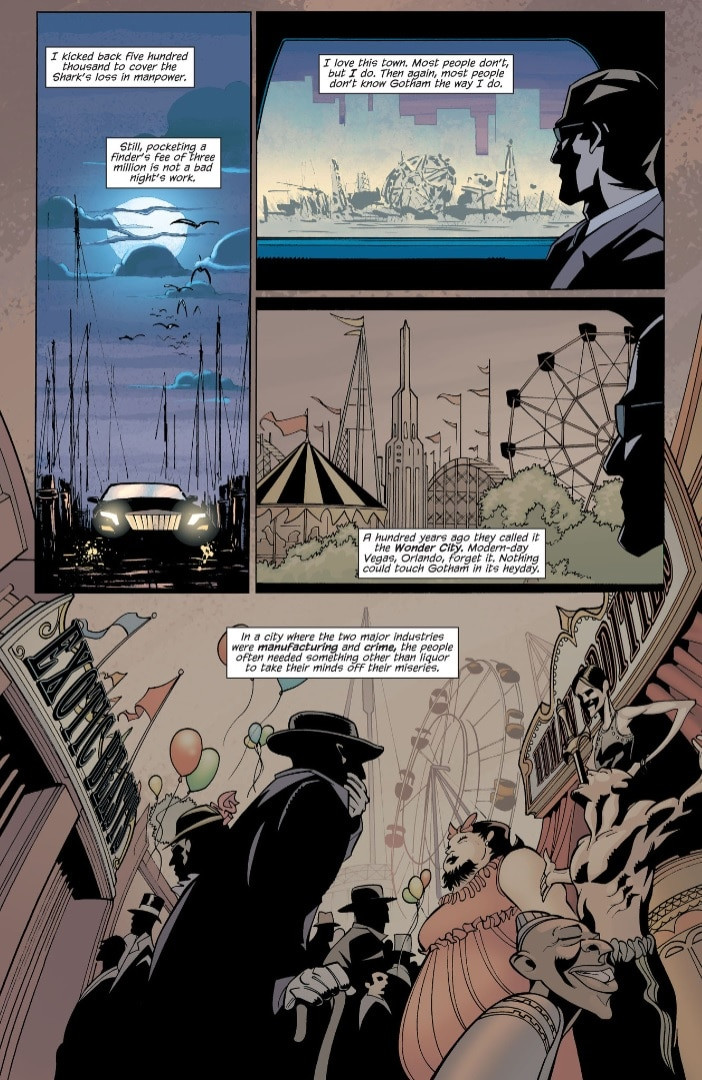 A street scene from Gotham, likely illustrating the urban decay and atmosphere of crime that pervades the city’s narratives.
A street scene from Gotham, likely illustrating the urban decay and atmosphere of crime that pervades the city’s narratives.
While we cannot pinpoint Gotham City on a map, its essence is drawn from real-world urban anxieties and the timeless struggle between light and darkness. It exists as a powerful symbol, a fictional space where heroism and villainy clash under the perpetual gaze of a brooding, bat-winged protector. And in that sense, Gotham City exists wherever our own cities grapple with similar challenges, making the question of “where is the city of Gotham” less about geography and more about the reflection of our own world in the shadows of a fictional metropolis.
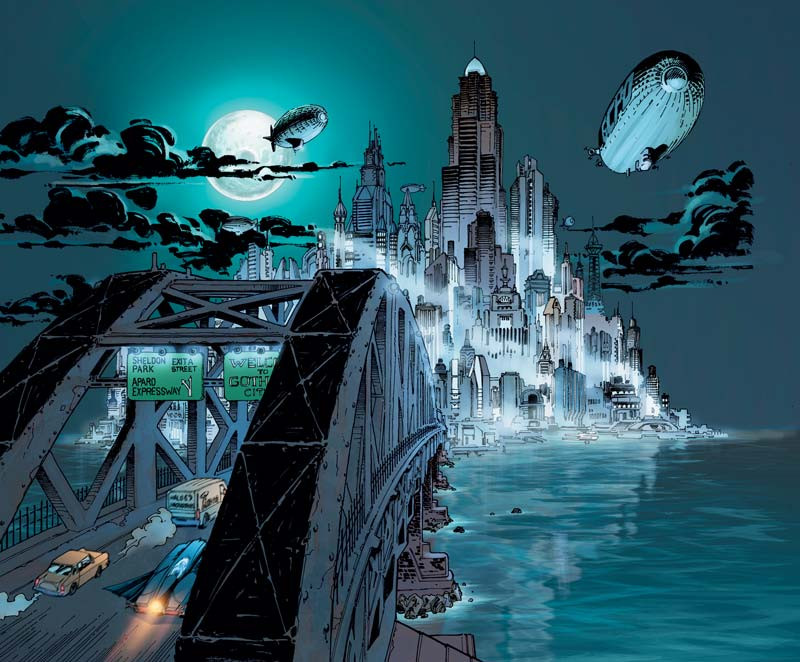 Batman perched high above Gotham City, a symbolic representation of his role as the city’s guardian and protector against the encroaching darkness.
Batman perched high above Gotham City, a symbolic representation of his role as the city’s guardian and protector against the encroaching darkness.

